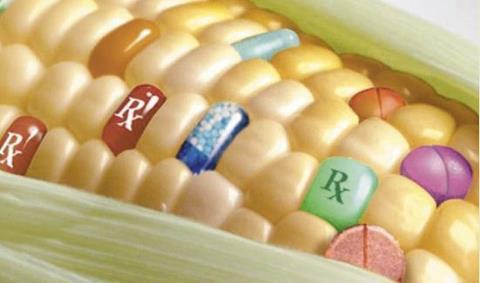The role of Biotechnology in agriculture; Genetically Modified crops for pollution prevention:Plant
The role of Biotechnology in agriculture; Genetically Modified crops for pollution prevention:Plant molecular biology has been a prominent area of study since the early 1980s. The study of plant genes and genomes, and the incorporation of modified genes into plants eventually led to the commercialisation of genetically modified crops in the mid 1990s. GM crops are seen by many as the first stepping stone in the biotechnological revolution, by many others, GM technology is perceived as a dangerous business that is both morally and biologically wrong. Although GM crops have sparked one of the hottest debates of the 21st Century, they may very well be an essential tool in sustainability, should crop yields be raised further and if crops are to be grown without excessive reliance on pesticides and herbicides.Crop destructive pests are a problem globally, resulting in enormous crop losses annually. The solution, discovered in 1947 was in the form of a chemically synthesised formula which was toxic to insects, known as a pesticide. The problem with pesticides, aside from being both destructive to the environment and human health, was that they were not very selective, in that they killed a broad range of insects, manyof which were not the targeted species.Pollution preventing GM crops have the potential to significantly reduce the dependence on agrochemicals in the agricultural sector, hence reducing the environmental effects associated with them. The environmental concerns of pesticide use were first brought to light in the 1960s with the publication of the book ‘silent spring’ by Rachel Carson, in which she details how the agrochemical DDT thinned egg shells, resulting in an early hatching of chicks, when there was no food source available and hence starvation.Biotechnology has offered solutions to remediate the problems associated with agrochemicals, for both pesticide and herbicide use. The most successful approach involves genetically modifying crops to enable them to act of an insecticide themselves. An example of this type of genetic modification can be seen in the transformation of Bascillus thurlingus into the DNA structure crops.Bascillus thurlingus is a natural insecticide, in that is contains toxins called insecticidal crystal proteins or delta endotoxins. Delta endotoxins rapidly paralyse the insect’s digestive system, so damage to the plant stops soon after the insect is exposed to the toxin. Subsequently, the target species is only affected by the insecticide and the wider environment is not effect. Bt has been successfully incorporated into the genetic makeup of many species of plants including cotton, and corn. Advantages of Genetically Modified CropsWhen looking at the advantages of genetically modified crops there is a need to address the specific purpose of them. GM crops were established to decouple the relationship between agriculture and agrochemicals, to enhance crop quality and to increase production yields. Environmentally, GM crops significantly reduce the need for pesticides and herbicides by producing plants which incorporate the ability to defend themselves from infestation, and provide the capability of withstanding herbicide use; this in turn reduces the environmental impacts associated with agrochemicals. They enhance crop quality by encompassing desired traits into existing DNA structure which enable the crop to grow more efficiently, thus reducing the requirements for fertilisation and again reducing the environmental impacts associated with it. Finally, in the context of pollution prevention, they increase production yields by creating hardy, resistant crops, resulting in less intensive agriculture practices whereby carbon and nitrogen stores are not disrupted and land is not left barren.Disadvantages of Genetically Modified CropsOne of the distinct disadvantages pertaining to GM crops is their reputation. As GM crops are ‘unnatural’ there is a concern that they will cause havoc among existing ecosystems or damage human health through the food chain. Although, most of this speculation is unwarranted there has been issues with regard the monarch butterfly, laboratory studies show some mortality in Monarch caterpillars fed milkweed leaves covered with Bt corn pollen. Several questions still need to be answered before the risk to Monarch butterflies can be determined. Although, in spite of this, GM crops are certified by the World Health Organisation and are steadily being traded globally. This however does not reduce the anti GM propaganda movement from painting a stark picture of GM crops.Another disadvantage is the lack of understanding and education provided about GM crops and their benefits, without which people are unable to arrive at an educated opinion on the role of biotechnology for pollution prevention. Perhaps with adequate, unbiased information people would be more capable of understanding that GM crops offer a solution to one of the biggest challenges facing the world; meeting the needs of the ever growing population in a sustainable manner.-Jean Further reading:http://www.chem.uky.edu/research/lynn/btcorn_4_13_09.pdfhttp://www.who.int/foodsafety/publications/biotech/20questions/en/ -- source link
Tumblr Blog : the-earth-story.com
#genetics#science#agriculture#biotechnology#genetically modified#plant#molecular biology#genes#genomes#biology
